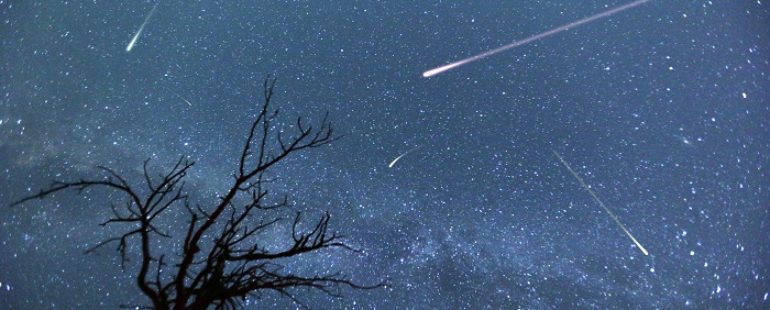
The sky used to serve as an important factor for people way back in the day. Especially messengers who traveled long distances to places they’ve never been. Galileo figured out that the stars appeared in the same places every night; the stars too had their own paths they repeatedly followed. But it wouldn’t be until much later that we figured out that meteors existed from broken up comets. This very weekend, through August 24, the Perseids meteor shower will peak as we pass through its path as we do every year.
Last year, was an “outburst” year. The number of meteors doubled in the night sky because of where the moon happened to be when we revolved into its path. The less moonlight, the better we can see meteors.
An earthgrazer is a slow-moving and long-lasting meteor that travels horizontally across the sky. If you’re lucky, you’ll be watching a rural night sky and come across one of those guys. Speaking of where to watch, the less light sources around you, the better. Places like Joshua Tree, Yosemite National Park, Kennedy Meadows, Red Rock Canyon State Park and Anza Borrego Desert State Park are the ideal places because they aren’t as inhabited by streetlights and whatnot.
Typical rates are about 80 meteors an hour. In the outburst years, the rate can be between 150-200 meteors an hour. The actual peak is this weekend; but earth will pass through the path of Comet Swift-Tuttle through August 24.
This shower is well known for very bright and long-lasting meteors that will be visible despite moonlight. From wherever you are, try to face a part of the sky that’s away from the moon. However, get as much sky as possible in your view since the meteors streak in all corners.
As with anything pertaining to the night sky, you need patience. Plan on at least a couple of hours. Do not face any light source. Keep your phone tucked away and don’t like a campfire nearby.
The source of the meteors is debris left by the passage of Comet Swift-Tuttle. Every year, the Earth travels through the debris field. The comet performs a very unusual orbit around the sun every 133 years. It comes into the inner solar system, only to reach past the orbit of Pluto. It passed closest to the sun back in 1992. There has been some concern that the comet will pass close enough to pose a threat to Earth.
The nucleus is 16 miles across, more than double the size of the object that may have been responsible for extinction of the dinosaurs. It is the largest object to approach so close to Earth on a regular basis.
In a 1997 paper written by Gerrit L. Verschuur, comet Swift-Tuttle has been described as “the single most dangerous object known to humanity.” The good news is that it will not pass near Earth until 2126.
When you sit back to watch a meteor shower, you’re actually seeing the pieces of comet debris heat up as they enter the atmosphere and burn up in a bright burst of light, streaking a vivid path across the sky as they travel at 37 miles (59 km) per second. When they’re in space, the pieces of debris are called “meteoroids,” but when they reach Earth’s atmosphere, they’re designated as “meteors.” If a piece makes it all the way down to Earth without burning up, it graduates to “meteorite.” Most of the meteors in the Perseids are much too small for that; they’re about the size of a grain of sand.
Check out slooh.com for live streaming of the Perseids shower. The quality of video is the best I’ve seen so far if you can’t make it out to the mountains or desert to watch. And https://www.space.com/32868-perseid-meteor-shower-guide.html gives you all the best tips to watching so that you can see as much of the shower as possible. Cheers!

Comments (No Responses )
No comments yet.